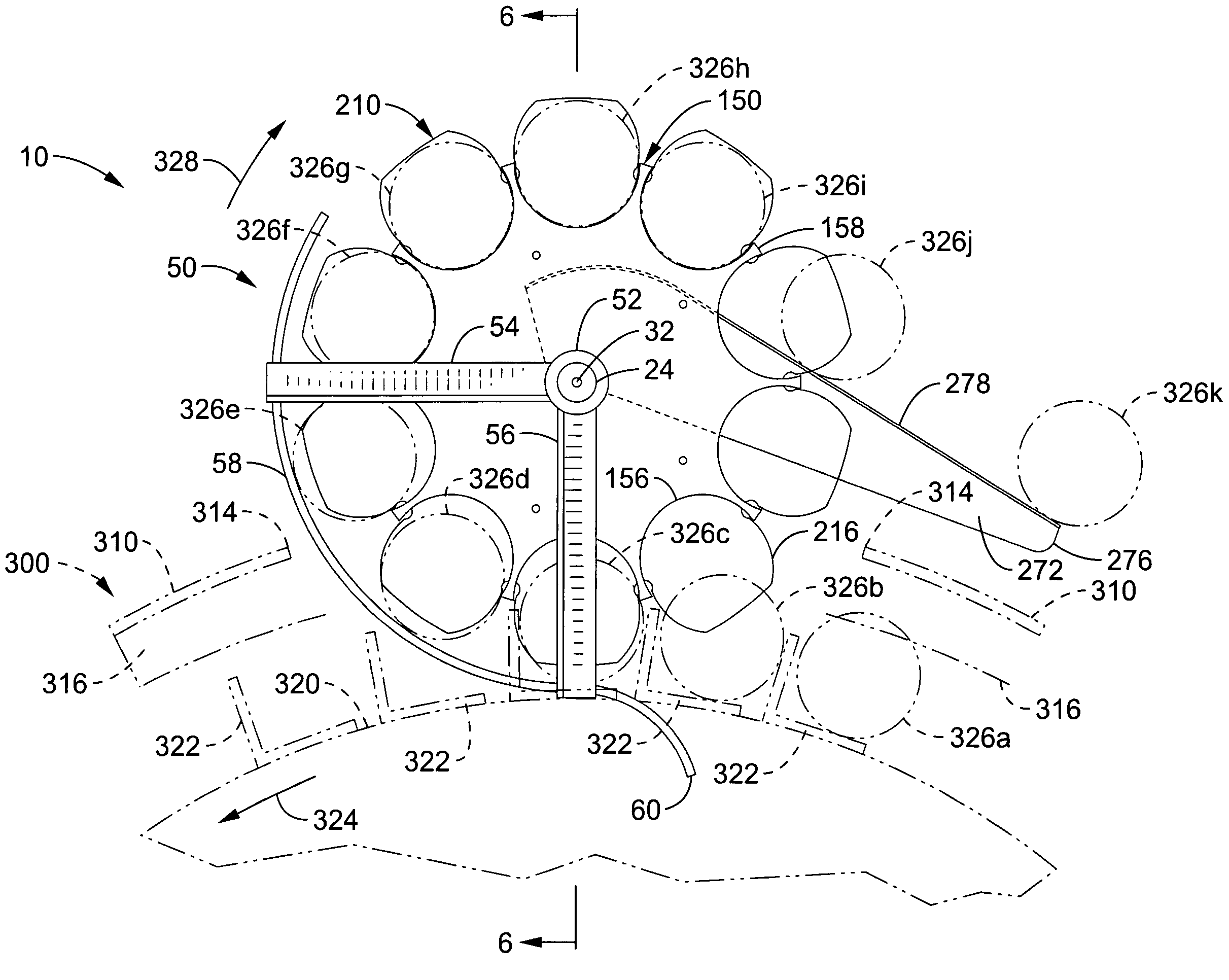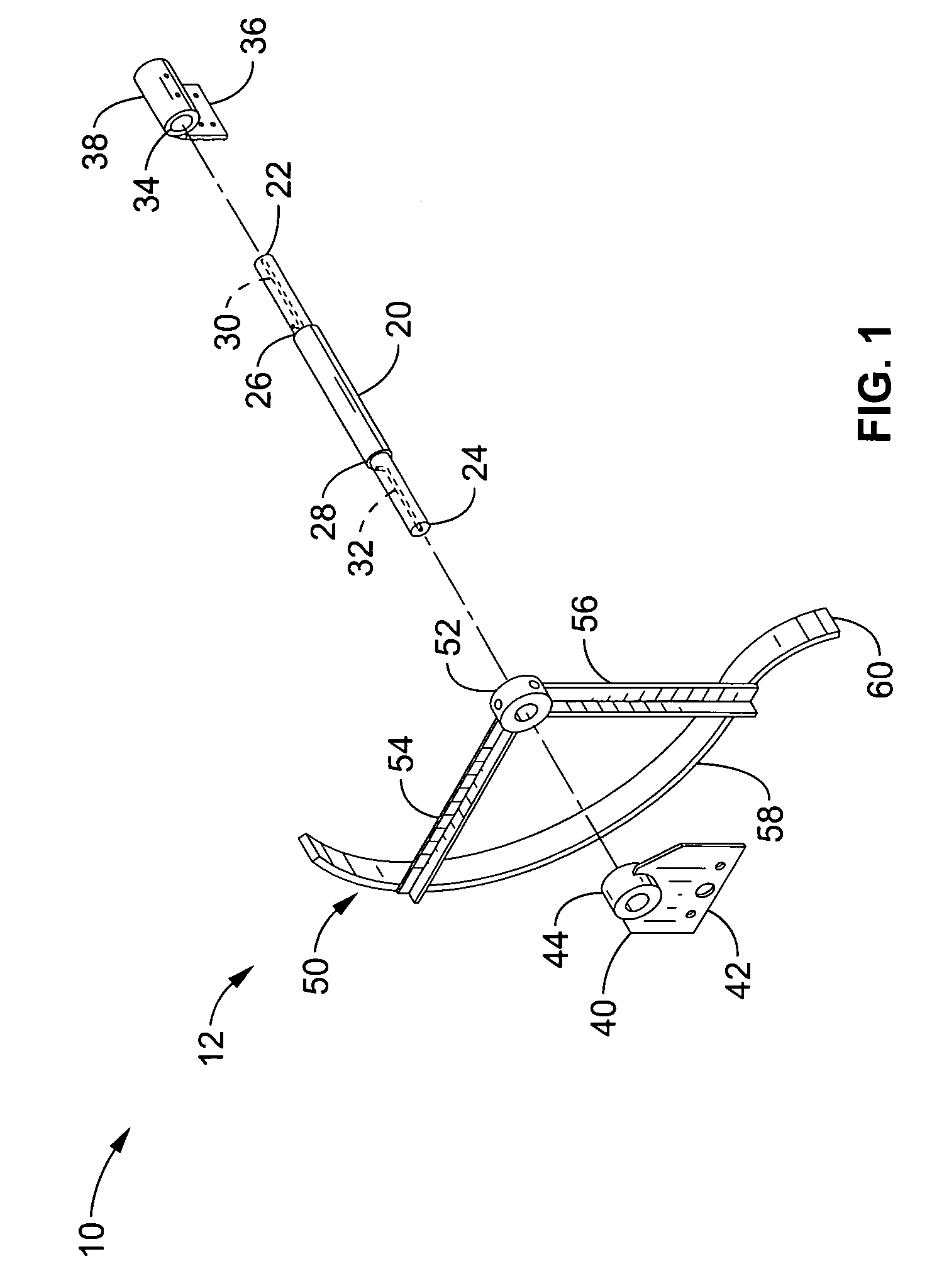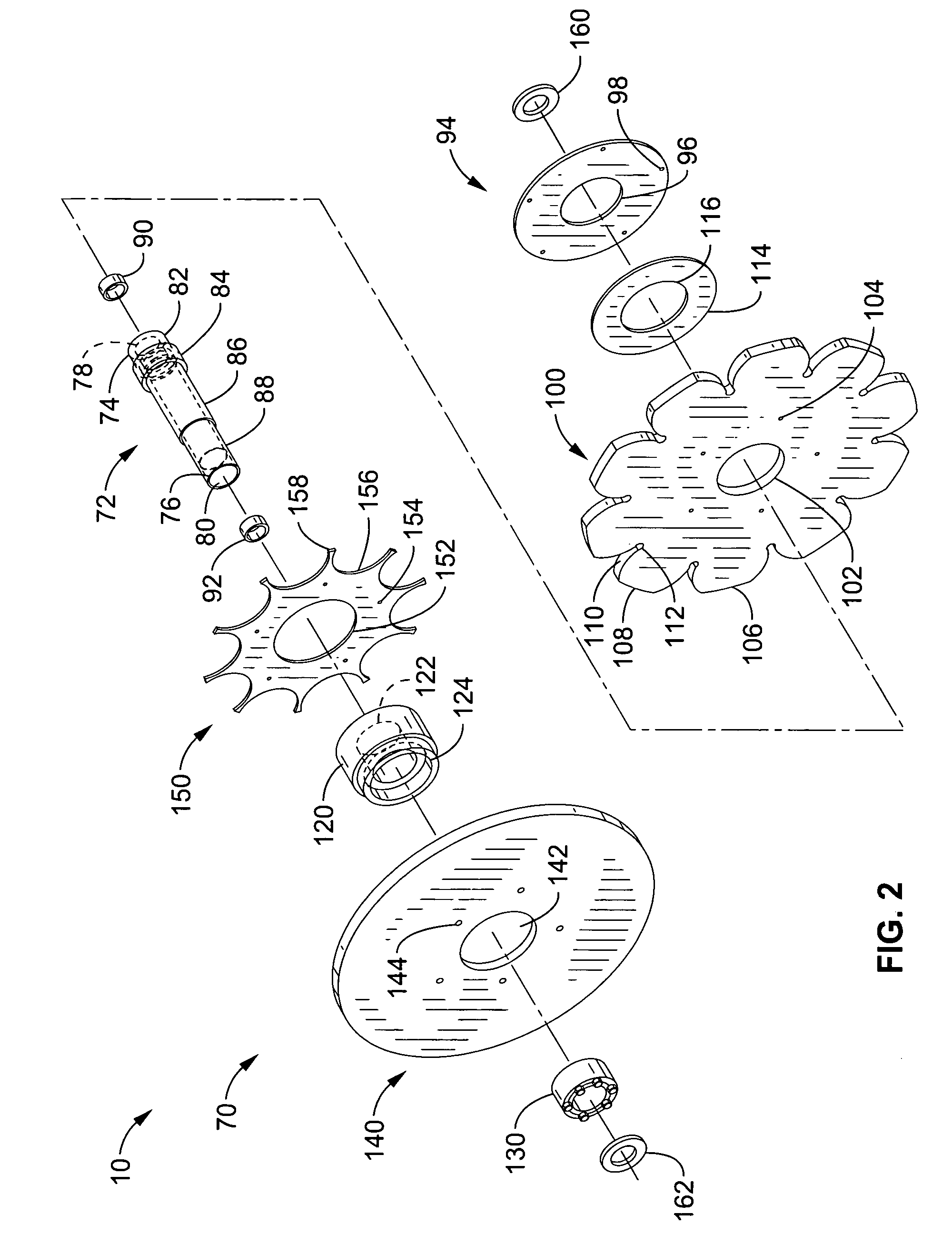Can extractor apparatus
a technology of extractor and cannon, which is applied in the direction of conveyor parts, transportation and packaging, disinfection, etc., can solve the problems of corrosive environment, excessive wear, and heavy use, and achieve the effects of reducing the scratching of cans, reducing the transfer of rust, and increasing the life of the extractor
- Summary
- Abstract
- Description
- Claims
- Application Information
AI Technical Summary
Benefits of technology
Problems solved by technology
Method used
Image
Examples
Embodiment Construction
[0050]Referring more specifically to the drawings, for illustrative purposes the present invention is embodied in the apparatus generally shown in FIG. 1 through FIG. 9. It will be appreciated that the apparatus may vary as to configuration and as to details of the parts, and that the method may vary as to the specific steps and sequence, without departing from the basic concepts as disclosed herein.
[0051]FIG. 1 through FIG. 4 are exploded views of the components of a can extractor according to the present invention and generally designated as 10. In order to better understand the relationship of the can extractor components, FIG. 1 illustrates a first sub-assembly consisting of a central shaft and stationary components coupled to the shaft. FIG. 2 illustrates a second sub-assembly comprising a rotating sleeve and stainless steel can handling components coupled to the sleeve that rotates on the center shaft shown in FIG. 1. FIG. 3 illustrates another embodiment of a second sub-assem...
PUM
 Login to View More
Login to View More Abstract
Description
Claims
Application Information
 Login to View More
Login to View More - R&D
- Intellectual Property
- Life Sciences
- Materials
- Tech Scout
- Unparalleled Data Quality
- Higher Quality Content
- 60% Fewer Hallucinations
Browse by: Latest US Patents, China's latest patents, Technical Efficacy Thesaurus, Application Domain, Technology Topic, Popular Technical Reports.
© 2025 PatSnap. All rights reserved.Legal|Privacy policy|Modern Slavery Act Transparency Statement|Sitemap|About US| Contact US: help@patsnap.com



